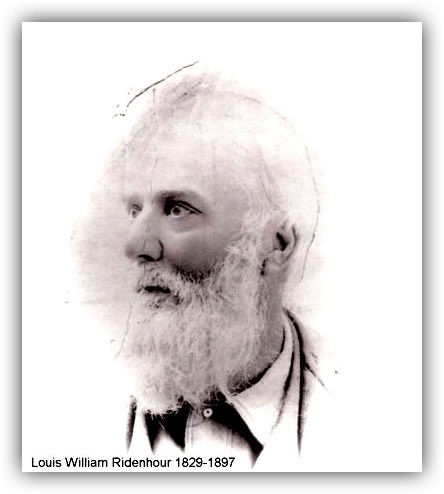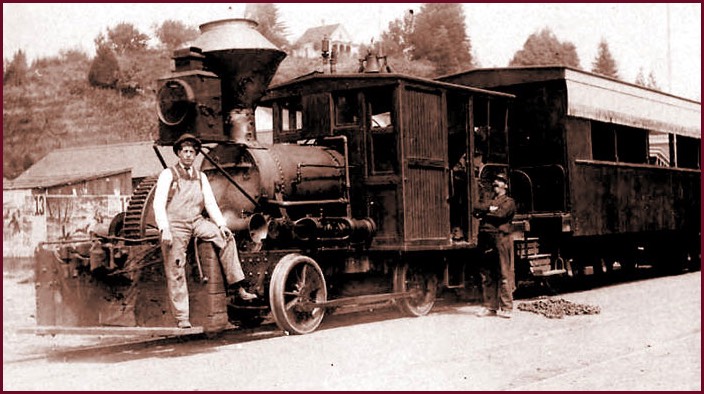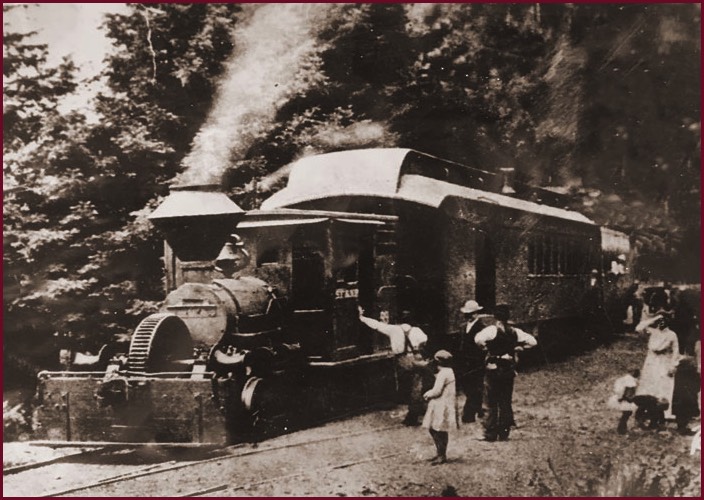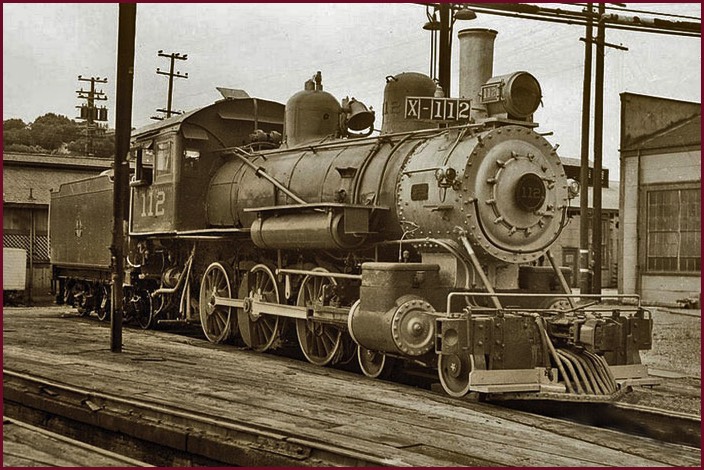RUSSIAN RIVER REACH BEGINNINGS
This part of the Russian River is mainly just a river that a few million years ago was forced to cut though the coastal mountain range. So it is a canyon with a few areas offering broader eroded spaces. These days people want to see it as a tourist destination, but it was not that way originally. It was big trees to cut down and turn into lumber to sell. That is what mattered to people on the river. Lumber mills. The first sawmill was in the area of the REACH. Later ones were in Guerneville and Korbel. Korbel included the canyon that would later be known as Rio Nido. These lowlife industrial spaces needed to haul lumber and the best way to do that was a train. So the mills paid for a train. In 1876 to Korbel. In 1877 to Guerneville.
However, there was one recreational spot in the REACH named Cosmo Farm. It had redwood trees, swimming hole and the ability to purchase homemade food. In time, this concept developed and spread to other areas. Tourists discovered that taking a train to Russian River for fun was the most wonderful thing that could ever happen.
Later, areas further down the river became popular for mills and eventually as tourist spaces. But the first mill was in the REACH (1834) and the first tourist spot was in the REACH (1871.)
However, there was one recreational spot in the REACH named Cosmo Farm. It had redwood trees, swimming hole and the ability to purchase homemade food. In time, this concept developed and spread to other areas. Tourists discovered that taking a train to Russian River for fun was the most wonderful thing that could ever happen.
Later, areas further down the river became popular for mills and eventually as tourist spaces. But the first mill was in the REACH (1834) and the first tourist spot was in the REACH (1871.)
For true beginnings, I have to acknowledge the Pomo (Pat-Win) who might have been around since 5000 BCE. They lived in temporary dwellings called Wikiups along the banks of the river in the summer.
But the more researchable aspect has to start with a brash young kid of 21 who lusted for gold and left Missouri for the California Sierra in 1850, Louis W. Ridenhour. After making a bit of money in the gold country, he purchased some land on the Russian River in 1853 from the United States. California had only been a state briefly at the time. He met Mary Heald and married her three years later.
But that is still too far back in time.
But the more researchable aspect has to start with a brash young kid of 21 who lusted for gold and left Missouri for the California Sierra in 1850, Louis W. Ridenhour. After making a bit of money in the gold country, he purchased some land on the Russian River in 1853 from the United States. California had only been a state briefly at the time. He met Mary Heald and married her three years later.
But that is still too far back in time.

FOR THE SAKE OF SIMPLIFICATION FOR THIS WEBSITE
History is everywhere and all the time. So I needed to define what The Russian River Reach meant to me. I see it as the railroad that was built in 1876 that entered the redwoods at Mirabel Park and terminated at Korbel Mills. To the sides, I include land to the river, and maybe a half-mile of redwoods to the other side. Basically it is the train tracks which later were torn out and became the path for the 1937 passage, RIVER ROAD.
Time wise, I start in 1876, and I end in 2026, 150 years later. I realize it is only 2018 as I write this, but I plan to live longer.
Time wise, I start in 1876, and I end in 2026, 150 years later. I realize it is only 2018 as I write this, but I plan to live longer.
NOTABLE TRAIN PHOTOS


While there were many trains on the Guerneville Line, the most popular had to have been "The Coffee Grinder." The name refers to the unusual set of gears on the front of the engine. The gears were part of an system that allowed the engine to be used as a wench to drag heavy logs in the process of loading the cars.

This engine is worth showing as number 112 was the final train on the line when the railroad finally closed on November 14, 1935. The redwoods had mostly been logged and the automobile had become popular causing the loss of too many riders.